Learn How To Assess Normal Animal Vital Signs
Learning how to recognise when something is wrong with an animal is one of the most important skills you as an owner can learn.
But before we learn what is abnormal, first, we must first learn what the normal vital signs for dogs and cats are.
Normal vital signs include taking measurements and observations of the heart rate, respiratory rate, temperature, capillary refill time and mucous membrane colour and hydration status.
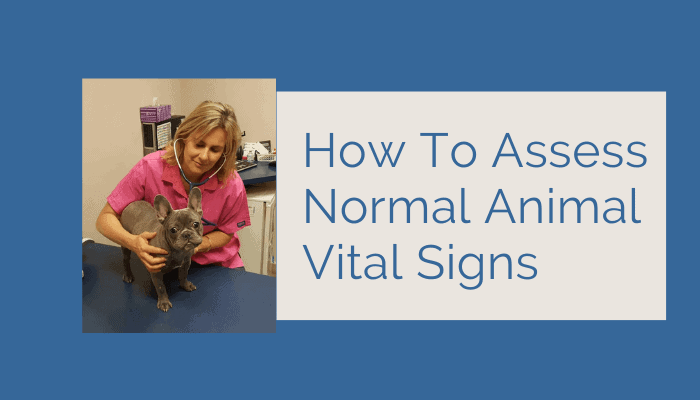
In this article, I am going to explain some simple things you can do today to help you recognise what is normal so that if and when your animal becomes sick or hurt, you are able to recognise it quickly and pass on these details to your vet.
What Is A Veterinary Physical Exam?
Arguably the physical examination is the most important practical skill for both veterinary clinicians and owners to develop.
It can also be one of the most challenging.
A good physical examination can detect minor abnormalities before they become serious problems as well as identify major organ dysfunction without extensive and expensive medical tests.
As mentioned earlier, you can learn to perform a clinical exam on your animals now, while they are happy and healthy. This serves as a good baseline to use as a reference for those times when you think your pet might be sick.
A veterinary physical exam is a detailed look at each organ system where we take note of what we find, whether that is normal or abnormal.
Keep A Record
The number one priority when performing these exams is to keep a record. This means you don’t have to rely on memory at a time when things may be getting a little stressful.
You can use any means to keep a record – a spare notebook or a file on the computer or you can download our Free Animal Vital Signs Checklist that you can fill out and keep handy.
Whatever method you use, just remember where you put it!
| ANIMAL | HEART RATE (bpm) | RESPIRATORY RATE (bpm) | TEMPERATURE (c) | TEMPERATURE (f) |
|---|---|---|---|---|
| DOG | 70-120 | 18-34 | 37.5-38.5 | 99.5 to 101.3 |
| CAT | 120-140 | 16-40 | 38.1-39.2 | 98-102.4 |
| HORSE | 28-40 | 10-16 | 37.5-38.5 | 99.5-101.3 |
| RABBIT | 180-350 | 32-60 | 38.6-40.1 | 101.5-104.2 |
| RAT | 330-480 | 85 | 35.9-37.5 | 96.62-99.5 |
| GUINEA PIG | 240-350 | 80 | 37.2-39.5 | 93-103 |
| FERRET | 200-250 | 30-40 | 37.7-39.4 | 100-103 |
The Physical Examination Process
For vet nurses or students who may be reading this – I’m only going to cover general appearance and vital signs – but it’s worthwhile for you to learn more about how to get a history, recognising surgical or anaesthesia risk signs and body conditioning scoring.
General Appearance
This is where we observe your pet from a distance and note any changes in symmetry or differences in size or shape of any limb or body part.
Assess body condition. In general, the animal is too thin if his ribs are easily seen, normal if they are readily felt without a layer of fat lying over them and obese if it is difficult to feel them at all.
In the following video, Dr Leigh shows us how to examine our pet to assess whether they are overweight.
Mentation
Here we are checking to see how alert the animal is.
If you are performing this when your animal is healthy they should be alert and responsive.
Vets will often refer to this as BAR or “bright alert responsive”.
Posture and Gait
Watch your animal move at the walk.
Look for limping, incoordination or unsteadiness and abnormal limb placement.
Can they turn easily?
When they go faster does a lameness appear more apparent?
Once we have assessed the general appearance of an animal, we move on to assessing vital signs.
How To Assess Your Animal’s Vital Signs?
To work out what is normal, it’s best to assess an animal when they are resting and calm.
Exercise and excitement can result in the elevation of many of these vitals.
Bodyweight
To assess bodyweight you may have to visit a vet clinic or pet shop that has scales to get an accurate weight.
It is very worthwhile doing this every 6months or so so that you can recognise if they are putting on, or losing weight and take action if required.
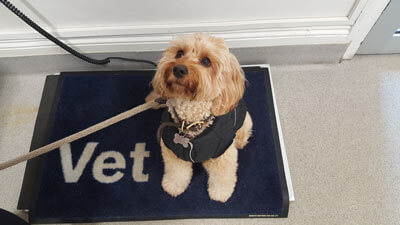
It is worthwhile weighing pets every 6 months to assess for excess weight gain or loss.
Temperature
This is assessed with a rectal thermometer.
These can be digital – which are the easiest to use, or mercury.
It’s important to lubricate the thermometer and insert it deeply and press the end of the thermometer against the side of the rectum.
If using a digital thermometer always wait until it beeps before removing, otherwise if using a mercury thermometer, wait a good minute.
- For dogs, any temperature above 39.5°C warrants immediate evaluation
- For cats – anything above 39.2°C
- For horses – anything above 38.5°C
Most animals will resist having their temperature taken, if it’s impossible, just leave it and remember the normal values that I’ve stated.
Often when an animal is sick – they don’t feel like fighting you so they will let you take their temp.
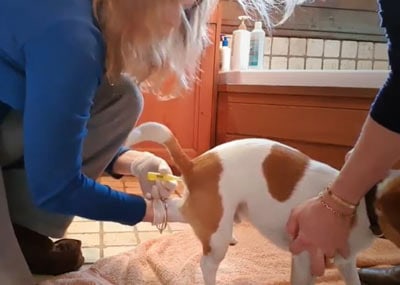
Have on hand a thermometer so that you can take your pet’s temperature.
Heart Rate or Pulse Rate
The easiest way for you to do this is to place your palm on your pet’s chest just behind the elbow on the left side.
You should be able to feel the heartbeat. If the animal is very overweight it can be difficult to feel this.
Count the number of beats in 15s and multiple this number by 4 to give you beats per minute.
- Normal heart rate for dogs
- Large breed = 60-100bpm
- Smaller breeds 100-140bpm
- Normal heart rate for cats is 170-200
- Normal heart rate for horses 32-60bpm
Using this method you might also be able to assess heart rhythm – the beat should be regular with no changes in speed or strength.
Anything outside this range means that something is amiss and you need to consult a vet.
Respiratory Rate and Character
Normal respiratory rate for dogs is 15-30breaths per minute
Normal respiratory rate for cats is 20-40bpm
Normal respiratory rate for horses is 10-24bpm
You can either assess inspiration or expiration, choose one and stick to it.
Using a similar method that we used to calculate the heartbeat, count the number of breaths in 15s and multiply by 4.
Sometimes it pays to lie your hand gently on their chest so that you can visualise the breath movement more easily.
Also take notice of how much abdominal movement there is.
A normal animal will only move their abdomen minimally, if at all.
If they are struggling to breathe you might see the belly move deeply in and out.
Other signs that they are struggling to breathe include holding their elbows away from their body, stretching their neck out and of course – open mouth breathing.
If you see any of these signs – it’s wise to get to the vet asap as your animal is struggling to breathe.
Mucous Membrane Colour and Capillary Refill Time
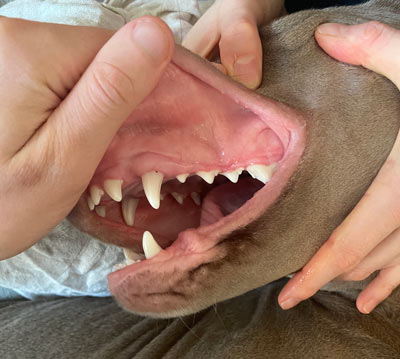
Normal mucous membrane colour in a dog is pale pink.
When assessing breathing we also look for signs that perfusion is adequate.
In other words, we want to assess that oxygenated blood is flowing around the body as it should be.
You may have heard of Mucous Membrane colour. What this means is that we are taking note of the colour of the gums.
Healthy perfusion in a normal animal means that their gums are a nice pale pink colour.
If the gums have a blue tinge, are muddy pink, bright red, yellow, or splotchy in colour or bleeding then these are NOT normal and you need to get your animal to a vet.
While looking at the gums we also check capillary refill time.
We do this by pressing our finger firmly on the gum.
The gum will blanch white when pressed, and become pink again when released.
Counting how many seconds it takes to return to normal colour gives us an indication of perfusion.
Normal capillary refill time is less than 2 sec.
Anything longer than 2 sec may indicate a compromised circulation due to cold, shock, cardiovascular disease, anaemia or other causes.
Head To Toe Physical Examination
The next part of our exam focuses on what I call a head to toe (or snout to tail) examination.
A full-body inspection is something you need to do frequently as just like us, our animals change.
Remember to document anything you find, and keep an eye out for changes.
You might like to download our free Lump and Bump handout that can be used to mark your findings so that you can remember where and what size any lumps or bumps are.
When performing a physical examination we are making assessments on the following:
- changes in symmetry,
- the presence of discharge,
- is there an abnormal smell,
- is the skin soft and supple with no evidence of scurf or scabs,
- are there any lumps or bumps,
- are there signs of infection
- are there signs of parasites
Starting from the head and neck check the:
- eyes,
- nose,
- ears,
- lymph nodes
- and mouth
- palpate the throat and neck to see if you can elicit a cough reflex
Then move on to the trunk and abdomen.
Check the genital areas.
Check the anal area for lumps, hair mats, hernias and faeces.
Check all the limbs. Can all the legs be moved freely or is there pain when joints are flexed?
Are the toenails or hooves well-trimmed and have a good quality horn that is not cracked?
It may seem like a lot to do, but if you do this regularly the whole head to tail body check can be performed within 2 to 3minutes. (Vets are often accused of not performing an exam, when in reality we’ve done it so efficiently that the client has missed us doing it!).
If there is one thing that you can do regularly for your animals, it is performing a complete physical exam.
An examination allows you to pick up problems very quickly and hopefully, that means that the problem can be fixed before it causes a lot of damage.
Make sure you download our free Physical Examination Checklist pdf that you can use to record all of your findings.
Have you performed a clinical exam on your animal’s before?
Do you know what their normal heart rate, respiratory rate and temperature is?
Why don’t you let us know in the comments what your pet’s normal vital sign values are!
If you find something that you have concerns about, download our pdf: Questions To Ask In A Consult so that you can plan for your vet appointment ahead of time.

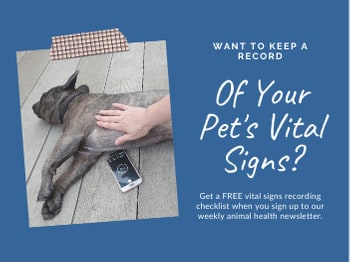
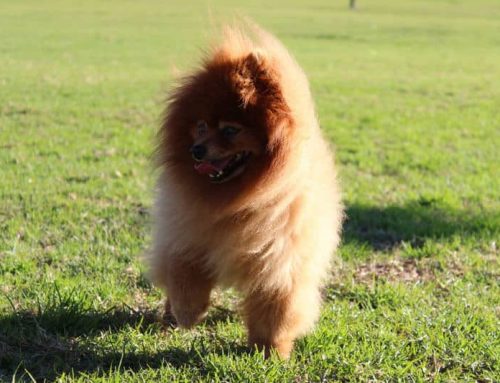

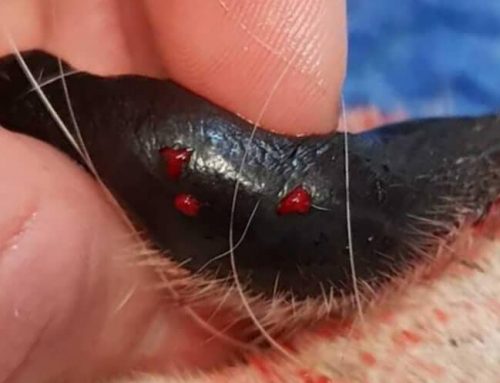
Leave A Comment